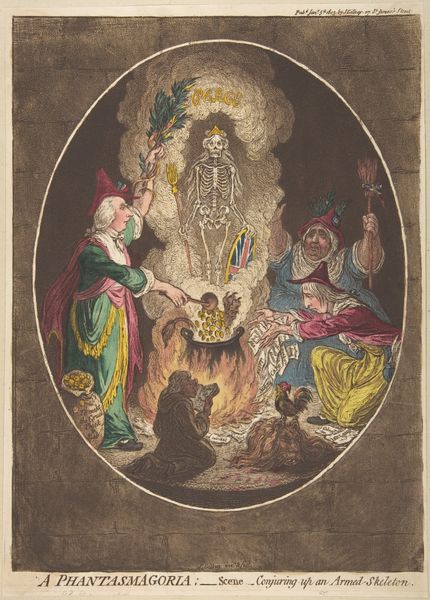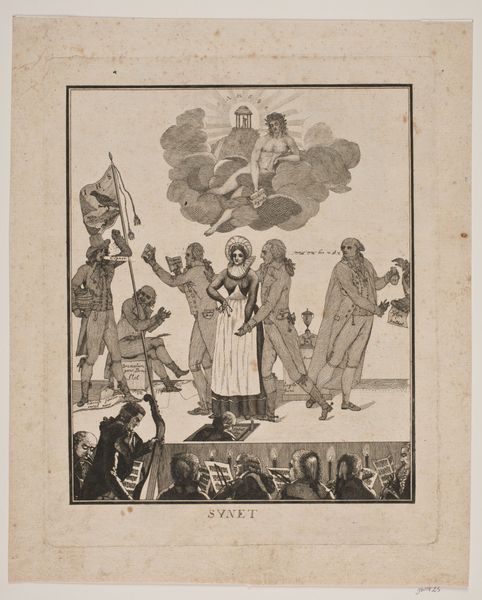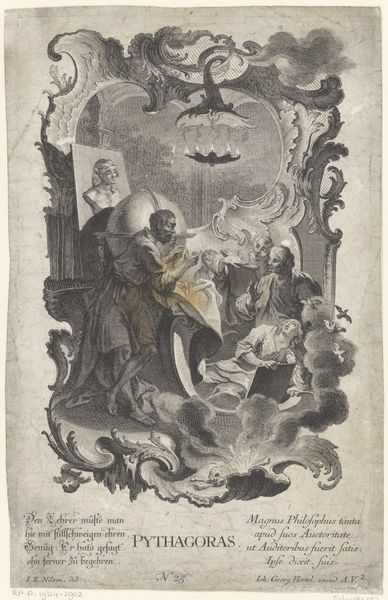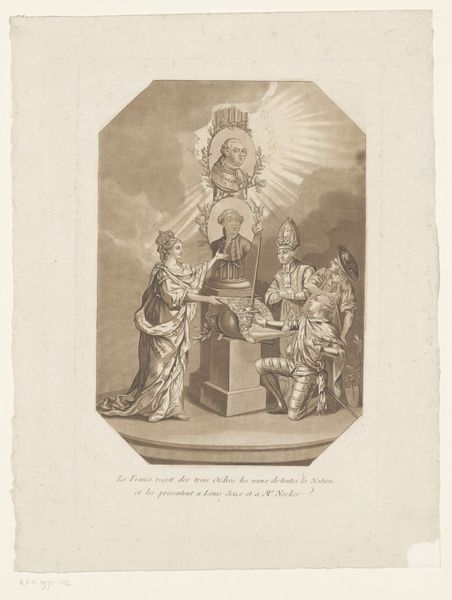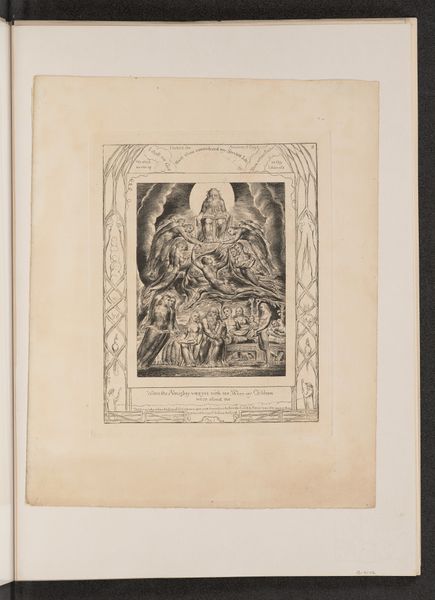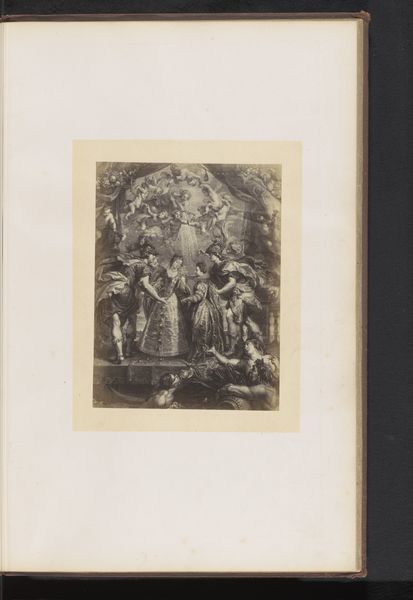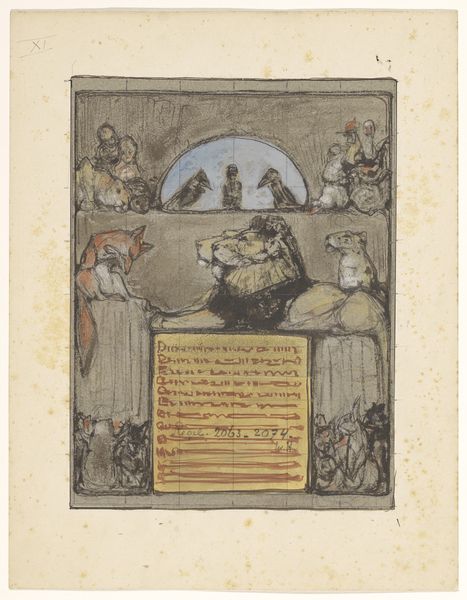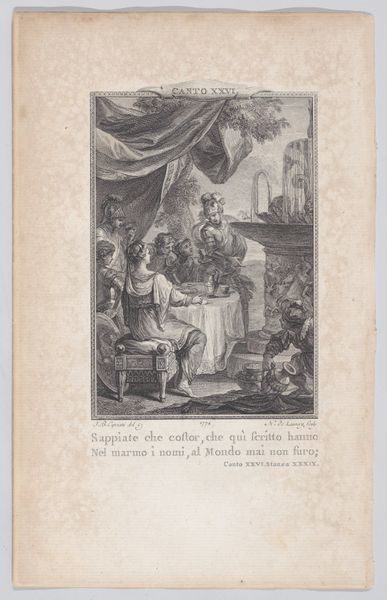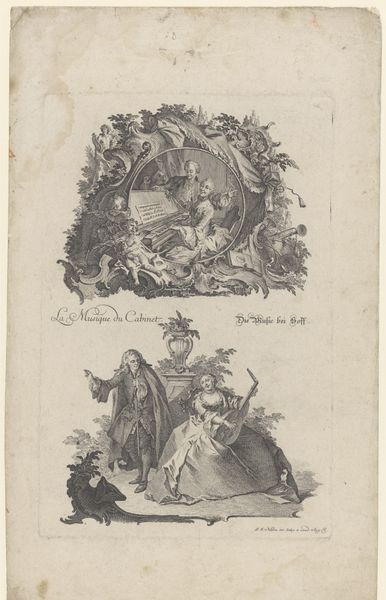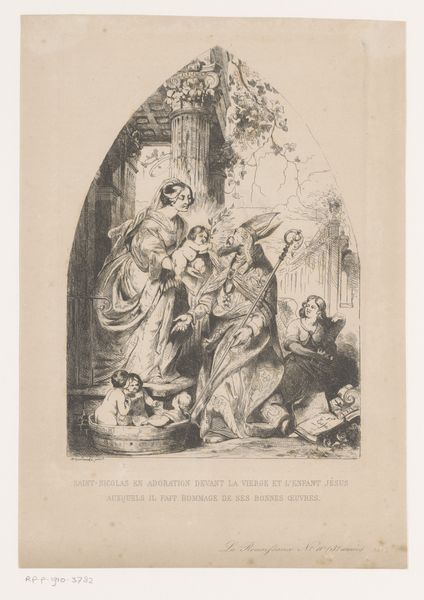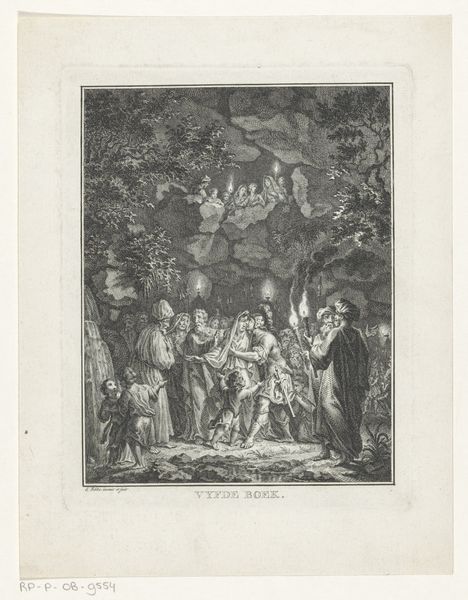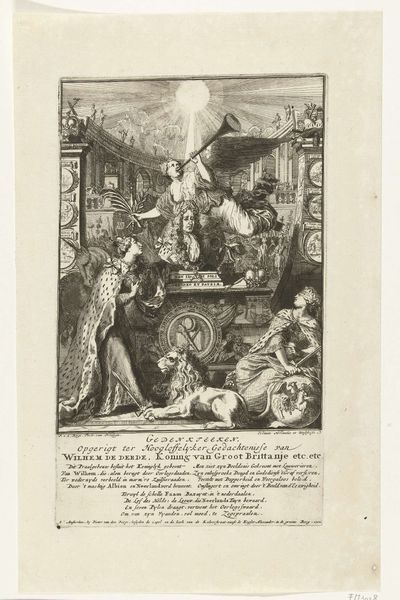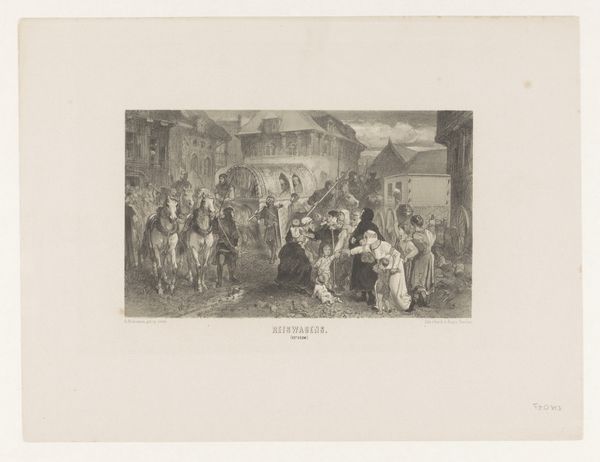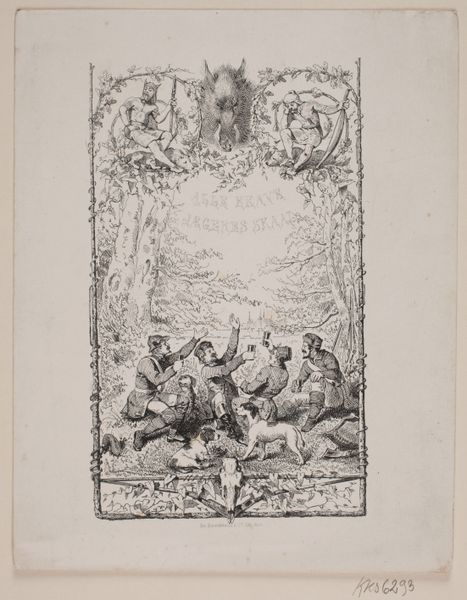
coloured-pencil, print, etching
#
coloured-pencil
#
allegory
# print
#
etching
#
caricature
#
coloured pencil
#
romanticism
#
history-painting
#
cartoon carciture
#
watercolor
Dimensions: height 238 mm, width 185 mm
Copyright: Rijks Museum: Open Domain
Curator: Here we have "Spotprent op de Vrede van Amiens, 1802," or "Print on the Peace of Amiens, 1802," dating to between 1802 and 1803. It combines etching and colored pencil techniques. Editor: Immediately, I’m struck by its rather unsettling nature. It evokes a sense of macabre theater with its dramatic lighting and bizarre characters. It looks like a scene from a dark fairytale. Curator: Indeed. Formally, we see a carefully arranged composition, contained within an oval frame, mimicking a stage. The central image of the skeleton, labeled ‘Peace,’ dominating the top half of the work, suggests a grim commentary on the fleeting nature of peace itself. Notice the intricate detail of the etching; Starcke masterfully renders depth and texture. Editor: Precisely. It’s difficult to separate the technique from the sociopolitical critique, isn't it? The Peace of Amiens, intended to bring respite during the Napoleonic Wars, is here depicted as a skeletal figure—a fragile, perhaps even deceptive entity conjured by these caricatured figures. The context matters enormously: we must ask what this supposed 'peace' truly represents for different groups? What sacrifices and compromises did it entail? And who benefits? It is a visual allegory brimming with political skepticism, tapping into public anxiety about the agreement’s actual outcomes and whether its short-lived tranquility served imperialistic agendas instead. Curator: And that theatrical setup, is clearly organized using symbolism to underscore these political and social messages, like the contents being thrown into that caldron. Each meticulously placed figure around the fire, from the kneeling clergyman to the heap of severed heads on the floor, represents a particular segment of the implicated community. They contribute, both literally and figuratively, to this strange theatrical "peace". And with what result? Pure carnage! Editor: Absolutely! The skeletal Peace is the very embodiment of failed negotiations, conjured by the brew of conflicting ideologies and political ambitions. This caricature vividly communicates public unrest with potent imagery, laying bare the underlying power dynamics shaping the discourse around that ‘peace’. It's a strong statement regarding its insubstantiality. Curator: The composition and detailing compel one to read the artwork's historical narrative but appreciate the artist's calculated formal strategies, too. The strategic balance creates that visual statement you identify and so convincingly interpret. Editor: Reflecting on it all, the brilliance lies in using folklore motifs and caricatured personalities to scrutinize the consequences of decisions of a treaty, turning a particular moment into an enduring parable about politics and social consequence.
Comments
No comments
Be the first to comment and join the conversation on the ultimate creative platform.
